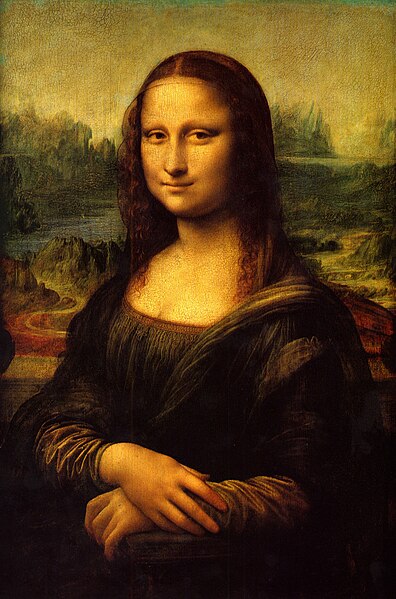(Reuters) - Researchers have begun their hunt for the remains of the woman who might have been the model for Leonardo da Vinci's Mona Lisa, hoping to unravel a mystery that has baffled art historians for over five centuries.
A team of experts armed with a special radar device descended this week on a dilapidated convent in Florence where they believe the body of the woman who modeled for da Vinci back in the 16th century is buried.
The real Mona Lisa, Italian art historians say, was Lisa Gherardini, the wife of a rich Florentine silk merchant named Francesco del Giocondo who is thought to have commissioned the portrait -- although there is no definitive proof of this.
The researchers say that if they can find her skull, they will be able to reconstruct her face and compare it with the painting.
The true identity of Mona Lisa and her enigmatic smile have intrigued art lovers around the world.
According to the Louvre museum in Paris, where the painting is on display, the portrait was likely painted in Florence between 1503 and 1506 and could have been commissioned to mark one of two events: either when Gherardini and her husband bought their house or when their second son was born.
The key to solving the mystery may lie at the Saint Orsola convent, a structure in central Florence almost reduced to ruins.
Using radar equipment which can identify objects underground, scientists are scanning the floor in the small church to pinpoint areas where they may start digging for Gherardini's remains.
"We have a document confirming the burial of Gherardini in 1542 here in the convent" said Silvano Vinceti, head of the National Committee for the Promotion of Historic and Cultural Heritage.
Researchers say Gherardini spent the last years of her life at the convent, looked after by her two daughters who were nuns, and was buried there.
"To be sure we have to find the DNA in her bones, and once we have found that we can compare it with the DNA of her children who are buried at the Santissima Annunziata convent," said Professor Francesco Mallegni, a paleoanthropologist.
Vinceti has been studying the painting for months and recently claimed to have found symbols hidden in the portrait.
He says Gherardini might have been an early model for the Mona Lisa but that da Vinci was also probably inspired by the face of his young male apprentice, Gian Giacomo Caprotti, who some say was also his lover.
It is not clear how long the project to study Gherardini's remains will need before coming to any conclusion but some of her descendants have already expressed skepticism.
"Let her rest in peace. What could finding her remains change to the charm of Leonardo's painting? To look for her bones seems a sacrilege to me," said one of them, actress and writer Natalia Strozzi.
(Wikipedia) - Speculation assigned Lisa's name to at least four different paintings and her identity to at least ten different people.[33][34] By the end of the 20th century, the painting was a global icon that had been used in more than 300 other paintings and in 2,000 advertisements, appearing at an average of one new advertisement each week.[35] In 2005, an expert at the University Library of Heidelberg discovered a margin note in the library's collection that established with certainty the traditional view that the sitter was Lisa.[36] The Mona Lisa has been in custody of France since the 16th century, when it was acquired by Francis I of France; however, after the French Revolution it came into the possession of the people.[37] Today about 6 million people visit the painting each year at the Louvre in Paris, where it is part of a French national collection.[38]
(Louvre.fr) - This portrait was doubtless painted in Florence between 1503 and 1506. It is thought to be of Lisa Gherardini, wife of a Florentine cloth merchant named Francesco del Giocondo - hence the alternative title, La Gioconda. However, Leonardo seems to have taken the completed portrait to France rather than giving it to the person who commissioned it. It was eventually returned to Italy by Leonardo's student and heir Salai. It is not known how the painting came to be in François I's collection.


No comments:
Post a Comment